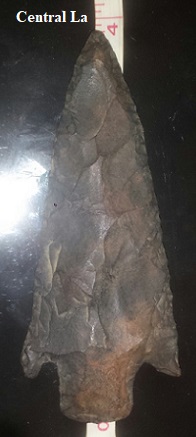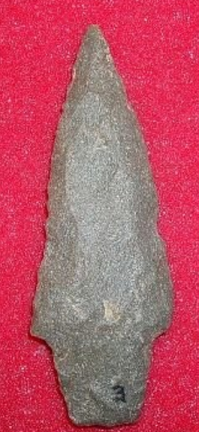Other Websites with Detailed Information:
Name Details:
Named By: Dee Ann Suhm, Edward Krieger, and Alex Jelks
Named For:
Type Site
Date Identified: 1954
Type Site:
Pogo
Cluster:
Commonly Utilized Material:
Date:
Cultural Period:
2,800 -2,000 B.P.
Late to Transitional Archaic
Neoglacial to Roman Warm
Glacial Period:
Culture:
Outline is Representative of Size and Shape:
Description of Physical Characteristics and Flaking Pattern:
This is a large triangular to lanceolate contracting stem point with an elliptical cross section. The blade may vary from straight to excurvate. The shoulders are well defined and
range from barbed to horizontal. The stem is primarily slightly contracting with straight edges, but may vary to parallel edges. The base ranges from straight to slightly convex and generally has
squared basal corners. This point is commonly well made and has a random flaking pattern.
Size Measurements: Total Length - 80 to 150 mm, Stem Length
- 20 to 36 mm (1/4 to 1/7 of the overall length), Width - 40 to 70 mm
(Suhm and Krieger, 1954)
Distribution:
Distribution Comments:
Suhm et al. reported this point in eastern Texas and into eastern Oklahoma, western Arkansas and western Louisiana.
Distribution may extend into central Texas.
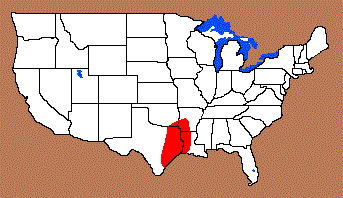
Related / Associated Points:
Additional Comments:
Suhm, Krieger, and Jelks (1954) felt that this type represented ceremonial spears in eastern Texas.
They note that these are commonly well made, but not commonly found at any
single site.
One of the problems with this type was pointed out by Webb and Ford (1956),
is that this point appeared to become a "Catch-All" for large stemmed points
from eastern Texas. This type was lumped into the large stemmed type
Morhiss and this has become a AKA for the Morhiss type.
This name was commonly used in the 60's and 70's, but became a catch-all for
multiple large stemmed points such as large Gary and Dunn type points.
In the 80's the use of this name decreased. These points are similar
to Morhiss points, but are well made and larger than Morhiss points
(generally no larger than 80mm).
Other points in this Cluster:
Point Validity: Valid Type
Suhm was an eminent Texas anthropologist who, among many distinguished positions, served as Director of Texas Archeological Research Laboratory. Krieger was a renowned anthropologist who spent most of his career in Texas cataloging projectile points and pottery in Texas before moving on to the University of Washington. Jelks was a distinguished anthropologist and helped organize the newly formed Department of Anthropology at Illinois State University where he was a Professor. His
work in Texas furthered the understanding of Texas archeology and was a founding force for the Society of Historical Archeology. This type was named in a professional
publication and subsequent book and has many professional references. This is a valid type.
.
Age Details:
Pictures Provided By:
Cast from Stonehenge Museum Supply
Damon Silva
Dillon Langford
Don Bickham
Rod of the Rock
References: (See Reference Page, Entry Number):
115
Pogo Projectile Point, Pogo Arrowhead
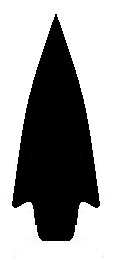


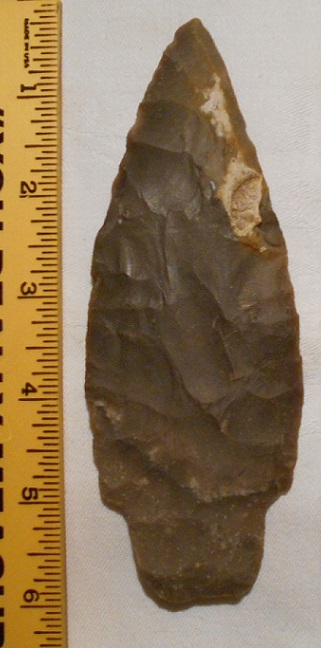
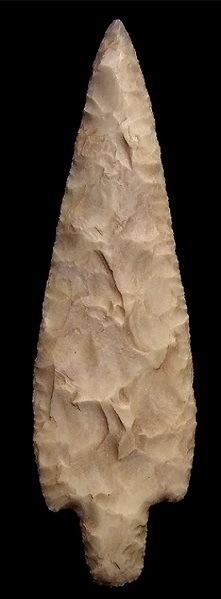
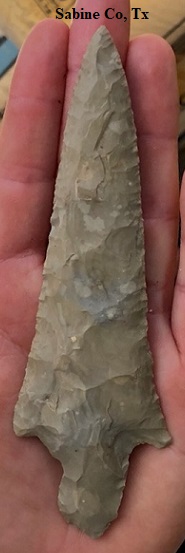
.jpg)

